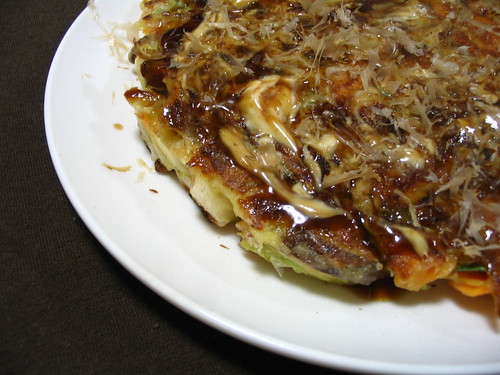Homemade Kimchi Part 1 - Soaking the Cabbage

While I was in Seoul I took a short cooking class where we made kimchi and bulgogi. The instructor, Ellie, had lived in Australia for a few years so we had a great time chatting about that and about my experiences in Japan. She had the cutest Australian Italian accent, picked up while waitressing at an Italian restaurant in Perth. When they found out I spoke some Japanese, the instructor who takes the Japanese classes came over to chat too and some very fun and confusing bilingual conversations ensued - 3 people, three languages, but not one in common for all of us.
As with tsukemono in Japan, more and more time-poor Koreans are picking up their kimchi at the market, even if they do take it home to a special kimchi fridge. Yet although it requires a little advance planning, making kimchi isn't a particularly labor intensive process. The cabbage and the red sauce we used in the class had been pre-soaked by the last students, and we prepared both of them for the next group. The actual preparation time for all the soaking and putting together the kimchi was less than an hour, but with soaking time and aging you need to allow at least 5 days from start to plate*.
Putting together a recipe from my class notes and the rough translation of the Korean recipe Ellie gave me is proving quite a process, so I'll give it to you in three parts: brining the cabbage, preparing the red sauce, and combining them and storing your finished kimchi.
Recipe: Simple Kimchi Part 1 - Soaking the Cabbage
You will need
1kg Chinese cabbage (aka hakusai, looks like this)
300 grams salt
6 cups water
- Discard any brown or wilted outer leaves and cut the cabbages into quarters.
- Sprinkle salt between the leaves, adding plenty towards the root end.
- Make a brine from 6 cups of water and 1 cup of salt and soak the cabbage sections in the brine. (You may need to place a weight on top of the cabbages to make sure they remain submerged).
- Let it stand for around 6 hours (in summer) or overnight (in winter), turning the cabbages over several times for even salting.
- When the cabbages are well-salted and a bit limp, rinse thoroughly in cold water and drain on a rack for 2 hours.
Next Time - Making the Red Sauce









